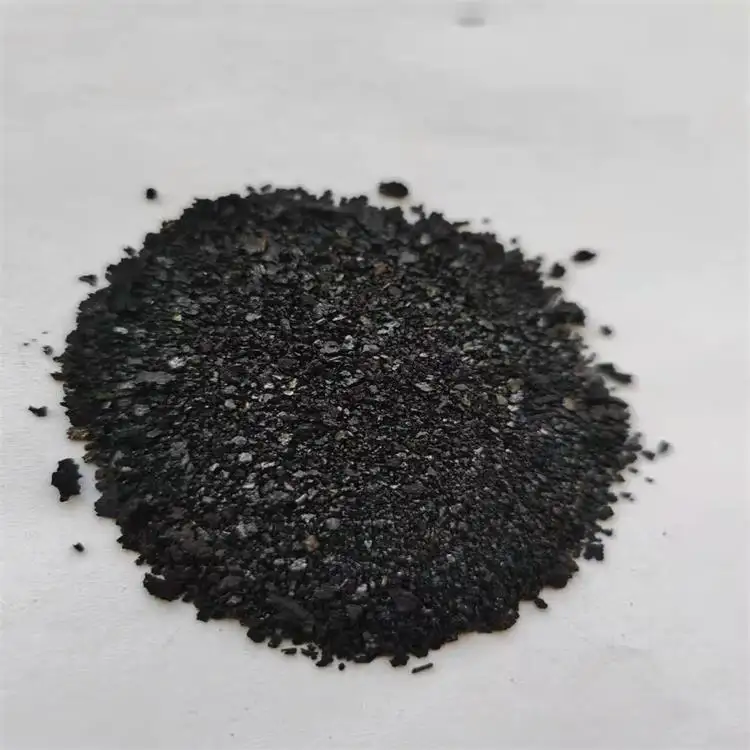Top Natural Indigo Dye Options for Vibrant and Eco-friendly Fabric Coloring
The Best Natural Indigo Dyes A Timeless Hue
Indigo has captivated cultures for centuries, revered not only for its striking blue hue but also for its historical significance and versatility. Derived from the leaves of plants, indigo dyes have been an integral part of textile traditions around the world, from ancient Egypt to modern-day artisans. As the world shifts towards sustainable practices, natural indigo dyeing has experienced a renaissance, rekindling interest in this time-honored technique. Let’s explore the best natural indigo dyes, their sources, and their unique qualities.
The Origins of Indigo
The indigo dye is traditionally extracted from the leaves of plants in the Indigofera genus. Some of the most commonly utilized species include Indigofera tinctoria, Indigofera suffruticosa, and Indigofera caerulea. These plants produce a compound called indican, which, when fermented and oxidized, is converted into the vibrant blue dye known as indigo.
Historically, indigo dyeing has been practiced in various regions, including India, Japan, Africa, and the Americas. Each culture developed its techniques and styles, creating a rich tapestry of indigo artistry. In India, for instance, the tie-dye technique, known as Bandhani, gained prominence, while in Japan, the shibori method produced intricate patterns through folding and binding.
The Process of Dyeing with Natural Indigo
Dyeing with natural indigo is a meticulous but rewarding process. The primary steps include harvesting, fermentation, and dyeing. First, the indigo plants are harvested, and their leaves are soaked in water. The fermentation process converts indican into indoxyl, which then reacts with air to create the insoluble indigo pigment.
Unlike synthetic dyes, the indigo dyeing process does not require high temperatures. Instead, the dye bath is kept at a slightly warm temperature to maintain its effectiveness. The fabric is submerged in the dye bath, and the magic happens when it is exposed to oxygen—transforming from a yellowish-green to a deep blue. This oxidation process is what makes indigo unique and is one reason many artisans prefer natural dyes over synthetic alternatives.
The Best Natural Indigo Dyes
best natural indigo dyes

1. Indigofera Tinctoria Often hailed as the best source for natural indigo, this species is predominantly grown in India and possesses a high indigo yield. The dye it produces has remarkable lightfastness and rich color depth.
2. Indigofera Suffruticosa This species thrives in tropical and subtropical regions, and while it may yield slightly less dye than Indigofera tinctoria, it is known for its brilliant blue shades and quick fermentation process.
3. Polygonum Tinctorium Also known as Japanese indigo, this plant has gained popularity among textile artists for its vibrant color and the ease with which it can be cultivated. It is particularly favored in traditional Japanese dyeing practices.
4. Isatis Tinctoria Commonly known as woad, this European plant served as a primary source of indigo before the introduction of the Indigofera species. Woad produces a unique blue shade that changes depending on the dyeing process.
Sustainable and Eco-Friendly
One of the most compelling reasons to embrace natural indigo dyeing is its sustainable nature. As consumers increasingly seek eco-friendly options, natural dyes reflect a commitment to environmental stewardship. They are biodegradable, non-toxic, and often produced using traditional methods that support local economies.
Moreover, many artisans are rediscovering and preserving ancient dyeing practices, ensuring that indigo dyeing remains a vital part of cultural heritage. The use of natural indigo not only promotes sustainability but also encourages a deeper connection between the maker and the material.
Conclusion
Natural indigo dyes represent a beautiful intersection of art, culture, and sustainability. Whether you're a textile artist, a fashion designer, or simply a lover of the color blue, exploring the world of natural indigo offers countless opportunities for creativity and ecological mindfulness. As we continue to navigate the complexities of modern manufacturing, embracing natural dyes like indigo may just lead us back to a more harmonious relationship with nature.
-
The Timeless Art of Denim Indigo Dye
NewsJul.01,2025
-
The Rise of Sulfur Dyed Denim
NewsJul.01,2025
-
The Rich Revival of the Best Indigo Dye
NewsJul.01,2025
-
The Enduring Strength of Sulphur Black
NewsJul.01,2025
-
The Ancient Art of Chinese Indigo Dye
NewsJul.01,2025
-
Industry Power of Indigo
NewsJul.01,2025
-
Black Sulfur is Leading the Next Wave
NewsJul.01,2025

Sulphur Black
1.Name: sulphur black; Sulfur Black; Sulphur Black 1;
2.Structure formula:
3.Molecule formula: C6H4N2O5
4.CAS No.: 1326-82-5
5.HS code: 32041911
6.Product specification:Appearance:black phosphorus flakes; black liquid

Bromo Indigo; Vat Bromo-Indigo; C.I.Vat Blue 5
1.Name: Bromo indigo; Vat bromo-indigo; C.I.Vat blue 5;
2.Structure formula:
3.Molecule formula: C16H6Br4N2O2
4.CAS No.: 2475-31-2
5.HS code: 3204151000 6.Major usage and instruction: Be mainly used to dye cotton fabrics.

Indigo Blue Vat Blue
1.Name: indigo blue,vat blue 1,
2.Structure formula:
3.Molecule formula: C16H10N2O2
4.. CAS No.: 482-89-3
5.Molecule weight: 262.62
6.HS code: 3204151000
7.Major usage and instruction: Be mainly used to dye cotton fabrics.

